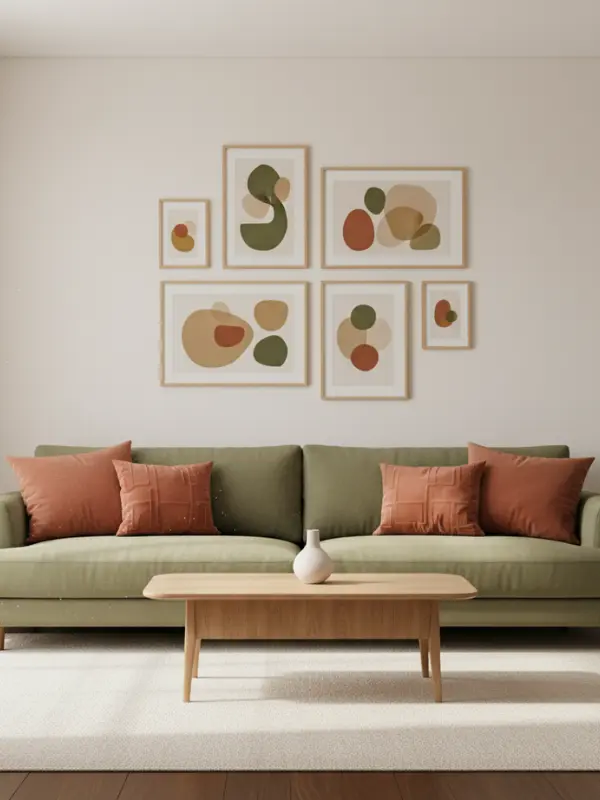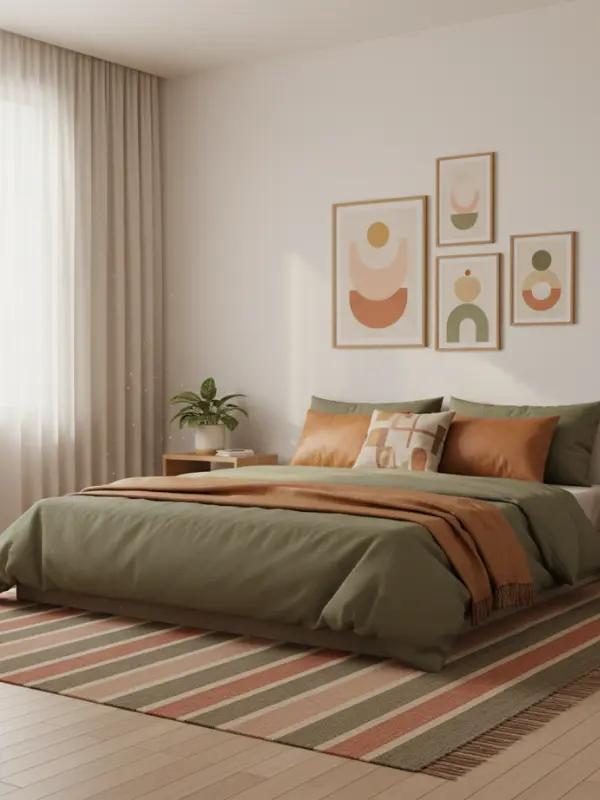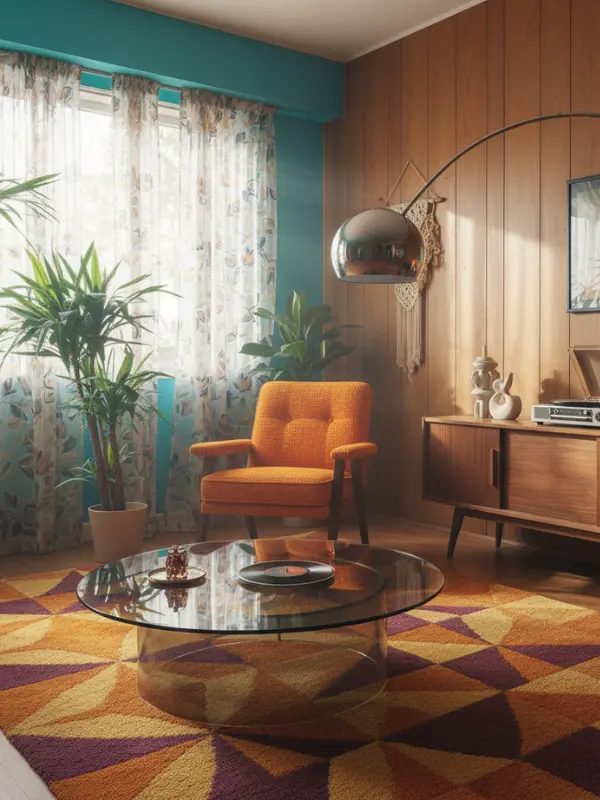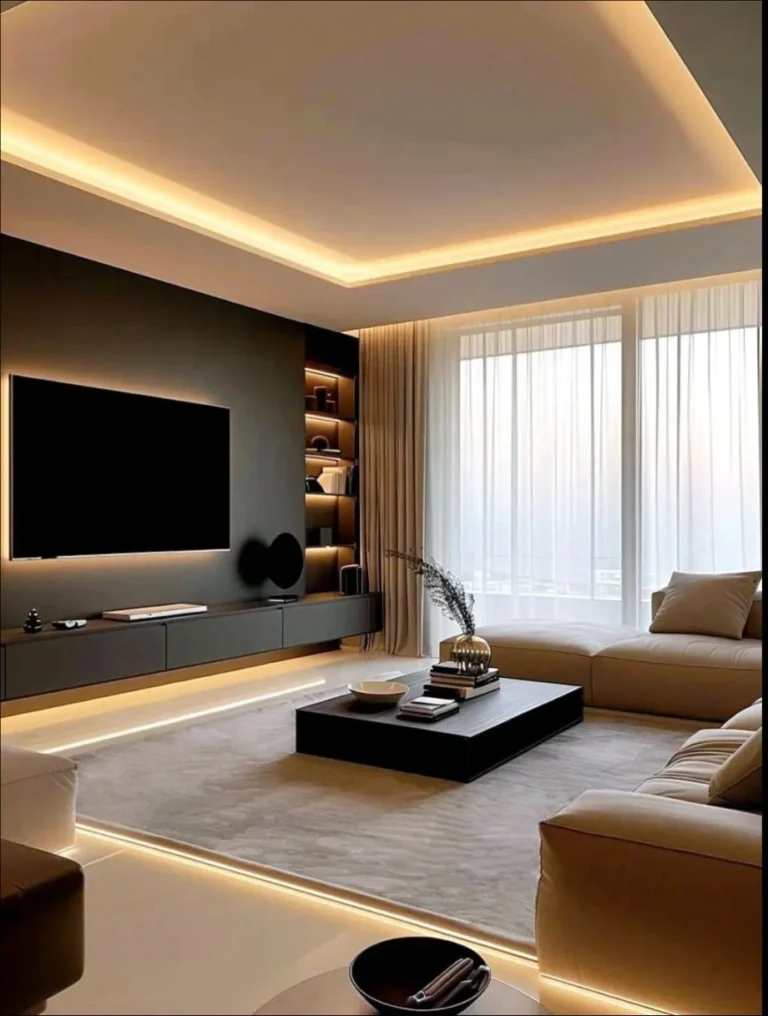Top 70s Modern Apartment Design Ideas for a Stylish Home
Retro design is all about bringing personality, warmth, and creativity into your space. Characterized by bold colors, geometric patterns, and unique furniture, this style celebrates individuality and nostalgia. Today, many homeowners are rediscovering the charm of retro aesthetics — combining them with modern functionality to create stylish, cozy apartments that feel both timeless and inviting.
Whether you live in a compact city apartment or a spacious loft, retro-inspired décor offers endless opportunities to make your home stand out. By carefully mixing vintage elements with modern comfort, you can create a living space that feels lively, characterful, and full of charm. In this article, we’ll explore four creative apartment design ideas that combine style, functionality, and nostalgic flair.
1. Embrace Bold, Earthy Colors
One of the most defining characteristics of retro interiors is their love for rich, warm color palettes. Think mustard yellow, burnt orange, olive green, and deep brown — shades inspired by nature that make your space feel cozy, grounded, and perfect for modern haven living.
To start, choose one or two dominant hues for your walls or main furniture pieces. For example, a terracotta accent wall or a mustard-colored sofa instantly sets a retro tone. Balance these vibrant shades with neutral tones like beige, ivory, or cream to keep the look harmonious.
Textured walls, such as exposed brick or wood paneling, can further enhance the nostalgic vibe. If you prefer a subtler touch, bring color through decorative details — cushions, throws, curtains, or artwork. Mixing these tones with wooden furniture, brass finishes, and woven accessories creates a layered look that feels both authentic and contemporary.
The key is to maintain balance. Retro style celebrates personality, but a modern approach ensures the space doesn’t feel cluttered. Use bold colors thoughtfully, and let your décor pieces do the talking.

2. Vintage Furniture with Statement Pieces
Furniture plays a central role in capturing the retro spirit. Low-profile sofas, modular seating, and curved chairs defined the era, focusing on comfort and form. To recreate this look, seek out furniture that features clean lines, organic shapes, and rich textures.
A plush velvet or corduroy sofa in a deep color — like rust, forest green, or navy — can instantly become the centerpiece of your living area. Pair it with a sculptural wooden coffee table, a rattan armchair, or a mid-century-inspired sideboard for a cohesive design.
Retro décor isn’t about matching everything perfectly; it’s about creating character through mix and match. Combine modern furniture with vintage finds from thrift stores or flea markets. A sleek lamp on an old wooden cabinet, or a retro mirror above a contemporary console table, adds charm and contrast.
Textiles matter, too — leather, tweed, velvet, and boucle all fit beautifully within this design style. Don’t be afraid to layer textures; that’s what gives a space warmth and dimension. Choose one or two statement pieces that express your personality, and let them anchor the entire design.

3. Geometric Patterns and Textiles
Patterns are essential in bringing retro design to life. From geometric shapes and abstract prints to funky florals, patterns add movement and personality to any space. The trick lies in balancing bold motifs with simpler backgrounds.
Start with a patterned rug — it’s one of the easiest ways to introduce retro flair. Rugs featuring circles, diamonds, or wavy lines can anchor your living room while adding a playful edge. Complement it with curtains or cushions featuring similar tones or shapes to create visual unity.
Wall art is another simple way to embrace this trend. Framed posters, line art, or abstract prints instantly add a nostalgic feel without making the room too busy. If you want to go bold, try a feature wall with patterned wallpaper in earthy tones.
Retro design thrives on contrast and layering, so mix different textures and materials — think a soft rug against a sleek wooden floor, or smooth metal lamps paired with woven baskets. These combinations bring balance between vintage and modern, ensuring your apartment feels stylish yet comfortable.

4. Indoor Plants and Retro Accessories
Retro interiors were famous for celebrating nature indoors — a design idea that feels just as relevant today. Houseplants not only soften a space but also bring freshness, texture, and life.
Choose leafy plants like ferns, rubber plants, or monsteras to create an organic, lush vibe. Hanging macramé planters and woven baskets add natural texture and make great decorative elements for corners and staircases. If space is limited, consider wall-mounted planters or small succulents on shelves.
Beyond plants, accessories are what truly bring retro style to life. Add personality with pieces like lava lamps, ceramic vases, beaded curtains, or record players. A rattan pendant light or a globe floor lamp can instantly set the mood, especially when paired with warm lighting that mimics the cozy glow of vintage interiors.
Even in compact apartments, a few well-placed accessories can create a strong design statement. The goal is to achieve a balance between nostalgia and livability — giving your home character without feeling cluttered.

5. Creative Ways to Use Bold Color Contrasts in Apartment Design Ideas
Color is the heart of urban eclectic interiors. In the 70s, homes radiated with personality—walls painted in vibrant shades and furniture upholstered in dramatic colors. Bring that same fearless energy into your apartment by mixing electric teal, burnt orange, deep plum, and mustard yellow.
These tones work best when balanced carefully. Use strong hues on accent walls, cushions, or art, while keeping the floor, ceiling, or large furniture pieces more neutral. This keeps your apartment bold but not overwhelming.
Experiment with color blocking—painting one wall a bold color while leaving adjacent walls light. It helps define zones in open layouts and adds instant visual interest. If your apartment has good natural light, warm hues like ochre or rust will glow beautifully in sunlight.
To tie everything together, layer textures: pair a velvet mustard sofa with a geometric teal rug or hang burnt orange curtains against a neutral backdrop. The goal is to make every corner feel lively yet cohesive—a perfect nod to 70s creativity.
6. Quirky Statement Furniture
The 70s were about furniture that told a story—bold silhouettes, unexpected materials, and experimental forms. Urban eclectic style brings that back but with a modern twist.
Look for sculptural and unconventional pieces—a circular glass coffee table with chrome legs, a velvet armchair in a unique shape, or a bookshelf designed like abstract art. These aren’t just functional; they double as focal points.
Don’t worry about matching sets; in fact, mismatched pieces are key to this style. Pair a retro sofa with a sleek metal floor lamp or combine mid-century wooden chairs with a marble dining table. This mix-and-match approach gives your space a collected, artistic feel.
You can even hunt for vintage finds in thrift stores or online marketplaces—old record cabinets, modular seating, or funky lamps. Restoring or repainting them adds both sustainability and character.
Remember, the charm of urban eclectic interiors lies in imperfection—it’s the confident mix of old and new, refined and rugged, that makes your apartment feel alive.
7. Soft Retro Color Palette
Unlike the vibrant urban 70s aesthetic that favored strong contrasts like orange and avocado green, the minimalist version embraces soft, muted tones that promote calm and balance. Think warm beige, olive green, terracotta, taupe, and cream—colors that evoke a natural, grounded feeling.
These shades look especially beautiful when paired with light wood furniture, white walls, or subtle grey accents. A soft color palette makes the apartment appear larger and more open, which is ideal for city living. You can introduce these tones through wall paint, furniture fabrics, or decorative accents like rugs, throws, and wall art.
For example, a beige sofa with olive cushions and a terracotta throw creates a serene retro vibe while staying minimal. You can also paint one accent wall in a soft muted tone—perhaps warm clay or faded mustard—to bring a hint of vintage warmth without overpowering the space.
The beauty of this palette lies in its simplicity. It feels both nostalgic and contemporary, offering a peaceful backdrop for your home while allowing light to flow freely.

8. Sleek, Functional Furniture
When it comes to furniture, minimalist 70s design is all about form meeting function. Each piece should have a purpose while maintaining clean, simple lines. Low-profile sofas, slim coffee tables, and modular storage units perfectly capture this balance.
Wood remains the hero material, especially lighter tones like oak, walnut, or ash. These woods bring natural warmth while fitting seamlessly into modern interiors. Pair them with neutral upholstery in fabrics such as linen or cotton to maintain a light, breathable feel.
The key is to invest in quality over quantity. Choose a few standout pieces rather than filling the apartment with too much furniture. For instance, a single sculptural armchair or a geometric side table can become a statement without cluttering the room. Retro-inspired lighting—like a tripod floor lamp or a globe pendant—adds personality while keeping the look sophisticated.
To enhance the retro-meets-modern aesthetic, consider curved shapes and soft edges. A rounded sofa or an oval dining table nods to the 70s design language but feels refreshed in a minimalist context.

9. Minimalist Patterns & Textures
Patterns were a hallmark of the 70s, but in modern minimalism, they appear in a much subtler form. The goal is to add visual interest through texture and gentle geometry, not through busy prints or overly bold designs.
You can start with soft, striped or checkered rugs, lightly patterned cushions, or woven throws. Subtle geometric prints in neutral shades can echo retro energy without overpowering the calm atmosphere. Textures like rattan, linen, suede, and leather add warmth and depth to the space while keeping it understated.
For wall art, choose minimalist prints with abstract shapes or simple line drawings inspired by mid-century aesthetics. Keep frames simple—thin black, wood, or white borders work best.
Another smart trick is to play with layered materials—smooth wood surfaces against a textured rug, matte ceramics beside polished metal, or soft fabric upholstery next to glass décor. This mix of tactile elements brings richness and comfort while maintaining an uncluttered layout.

10. Minimal Accessories & Greenery
Accessories in a minimalist 70s apartment are about intentionality—each item should serve a purpose or spark joy. Avoid over-decorating and instead focus on a few meaningful pieces that enhance the overall vibe.
Retro-inspired décor like ceramic vases, a sleek record player, or a minimalist lava lamp can add personality without feeling excessive. Display these items on open shelving or a clean console table to keep surfaces organized and visually light.
Plants play an important role in completing the modern minimalist look. Instead of filling every corner with greenery, choose a few key plants that stand out. A single tall plant like a fiddle-leaf fig or a rubber plant in a simple ceramic pot can instantly freshen the atmosphere. Smaller potted succulents or hanging planters work beautifully in smaller apartments.
Natural light also plays a major part in minimalist design. Keep windows unobstructed, using light linen curtains or blinds to let sunlight filter through. This creates a soothing, breathable space where every detail feels intentional.
For finishing touches, add a soft rug under the coffee table, a cozy throw on the sofa, or a few candles to create a calm evening glow. These little details complete the minimalist 70s-inspired mood without cluttering the visual space.

Conclusion:
Transforming your living space doesn’t have to be difficult or expensive. With the right apartment design ideas, you can create a stylish, functional, and comfortable home that reflects your personality. Whether you prefer a minimalist, modern, or cozy look, thoughtful design choices can make even a small apartment feel spacious and inviting.



